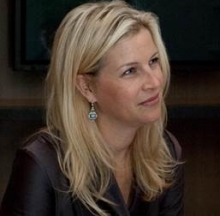INCREASING THE FLOW OF CAPITAL FOR GOOD - INVESTING AND GIVING

Last autumn, I was lucky to get an introduction to the extraordinarily beautiful exhibition of portraits by Goya at the National Gallery. Our guide was art expert Richard Thomas and when we were two-thirds of the way through, he made what I thought was a brilliant curatorial observation. He said that his job was to introduce the viewer to the artist – to make the introduction, offer a couple of brief insights to allow the visitor and the exhibitor to find common ground, and then leave the rest of the relationship to them.
As I walked from room to room, tracing Goya’s relationships with his different sitters, it made me think about my own role. I reflected that in the context of the changing economy of the arts, the work can no longer stop at an introduction. Art may be the most emotional of human expressions, but it has always entailed a commercial aspect. Building sustainable, productive relationships is a lot more complex, requiring innovative interventions and measurable impact to ensure success.
There is unquestionably a gap in the UK between the shrinking ability of the state to support the arts and the natural knowledge and predisposition of the private sector to respond. This is where we step in by making the introductions, nurturing the early relationships and helping each side to divine, explore and quantify the return they get on their side of the deal.
Arguably, there is also a gap in the skill sets of the organisations involved. Arts institutions are much more financially savvy than they used to be, but very few of them have attracted top marketing executives to their leadership, with serious experience of corporate challenges and objectives. Likewise, not many corporations count artists among their workforce to bring the creative vision of a museum, gallery or opera house to a sponsorship. I am a former Chief Marketing Officer of News International, as well as a classically trained opera singer from the Juilliard School, and look for this blend of the corporate and the artistic in every member of my team.
For me, the process starts with ensuring there is authentic alignment between the two parties. If you are trying to find the right environment for a technology company, for instance, you are likely to see an appropriate partnership with a gallery such as Tate Modern, which has a similar innovative approach.
You can see this in the way Bloomberg works with the arts. It seeks ways of supporting institutions that are involved with the communities where it operates – often financial centres – and in ways that showcase its own digital capabilities. This can be expressed in longstanding work with projects such as its recent Public Art Challenge, selecting four cities around the world to support it, down to the individual relationship Michael Bloomberg has forged as Chairman of the Serpentine Gallery in London.
It is a great example of business seeking ways to build its own corporate reputation alongside the arts initiatives in which it is invested, and in a way that is more meaningful and with greater lasting impact than traditional marketing and communications.
Some businesses have always been rooted within the arts for historical reasons. Over many generations, UBS has assembled one of the great corporate art collections. As it acquired other banks, it acquired their collections, too. So it naturally developed an interest in how to loan and how to curate these growing assets. And it became interested in buying with an eye to the future. That background makes it a natural supporter for big art fairs and major projects with partners like the Guggenheim.
Of course, wealthy individuals have always been critical to the funding of public spaces and they continue to be. But in an age when everyone knows that big businesses should be playing responsible roles in society, it is important to differentiate between one person’s philanthropy and corporate investment. The chairman might be a supporter of the arts in his or her own right, and that should be encouraged, but the company should not be offering support as an expression of one person’s patronage – it should be driven by the interests of shareholders and partners.
To do this requires an ability to evaluate the investment, something that lies at the heart of all our client relationships on both sides of the partnership arrangement. We know we have to show how to add value to a corporation’s bottom line as well as return to the community. We advocate approaching a partnership with a long-term outlook, which requires bespoke measurement tools to be used and recalibrated over time.
Out of 10,000 targets for your business, you might engage 7,000 or 8,000 through invitations to the rugby, while the rest may care more for Goya. And the positive effects may equally be measured inside the company. In my experience, the smartest corporations are spreading the value of access to artistic excellence well beyond the boardroom. Take American Express and BP, thinking as much about the impact of cultural engagement for their employees in Brighton, Hull and Aberdeen as at the company headquarters.
It is part of the joy of what we do to see these fruitful partnerships become reality. We have established trusted relationships over time with dozens of major arts institutions globally and helped them maximise assets so that they can merchandise, market and partner with the ultimate aim of ‘making money while you sleep’.
I see us as translators as much as matchmakers, bringing two cultures together, just like Goya did when he connected his artistic patrons with the people and worlds they inhabited. Maybe not such a brief introduction as you might have to a painter and his work, but doing what is needed to let both sides feel the full value of their coming together.
Download this article as a PDF. This article first appeared in Philanthropy Impact Magazine issue 13.





